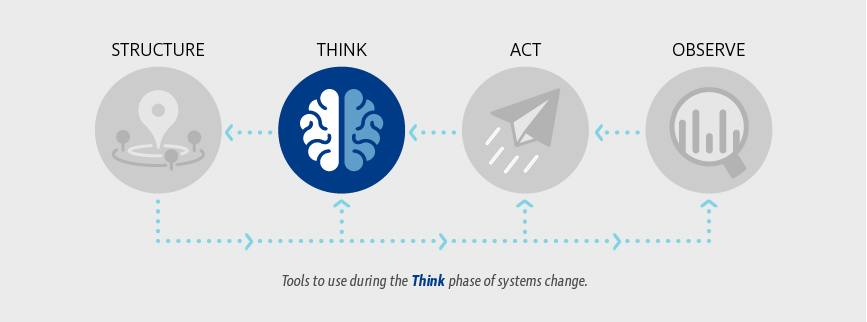Understand the Problem
Review how to organize your objectives (what you’re hoping to achieve), understand the relationship among those objectives, and separate objectives from means (how you’re going to achieve the objectives).

Organizing and Understanding Objectives
 |
| Get the Tool |
Using This Tool: Key Questions
Who should use this tool?
Workforce practitioners who want to act on a problem or “mess” and organize their many concerns to better understand what they want to achieve.
What does this tool help you achieve?
Systems change initiatives are often designed to tackle multiple problems and achieve multiple objectives simultaneously. Brainstorm your many concerns about a problem, organize concerns into a set of objectives (or things you want to achieve), and determine which objectives are most important or fundamental. Properly organized objectives inform all subsequent decisions in your systems change initiative, including what to research, which stakeholders to involve, and the means by which to achieve your objectives.
When should you use this tool?
Additional Reading
- Review: Example of this process from Baltimore.
- Presentation: “Objectives” by Tom Stockton, environmental decision analyst at Neptune and Company, on identifying and organizing objectives.
- Article: “The Hierarchy of Objectives,” Harvard Business Review, May 1964, on performance measurement and the hierarchy of objectives.
Organizing and Understanding Objectives
This worksheet provides guidance on the fundamental objective hierarchy process.* Use this process to better understand how to solve your problem.
1. Identify Objectives
Start by brainstorming all your possibilities. Consider your primary concerns. Create a wish list of tasks you want to accomplish. Consider alternatives and reflect on your past work. At the end of this step, you should have identified your objectives.
2. Separate Means and Ends
Classify your identified objectives into means and ends. Of the objectives you identified, ask yourself these questions:
- Could this objective be a means to achieving or contributing to another? These are means objectives.
- Does this objective define the fundamental reason for your interest? These are fundamental objectives.
Example:
- Means objective: Show up to work early.
- Fundamental objective: Get your work done on time.
3. Create a Hierarchy
Organize your fundamental objectives into a hierarchy. Place general objectives at the top. Lower-level objectives should be mutually exclusive and collectively describe a higher-level objective:
- As you move objectives down the list, ask, “What do you mean by that?”
- As you move objectives up the list, ask, “What more general objective is this an aspect of?”
*Inspired by Keeney, R. L. (1996). Value-focused thinking. A path to creative decision-making. Harvard University Press.
Explore Related Tools
Cultivate Influence in Your Community
Get tactics for boosting your influence and impact.
Go to Cultivate Influence in Your CommunityAnalyze a System From Multiple Perspectives
Access the 5Rs framework, which highlights five key dimensions of systems: results, roles, relationships, rules, and resources.
Go to Analyze a System From Multiple PerspectivesOutline Interrelated Problems
Review how to depict a “mess” or set of interrelated problems to inform your research before starting your systems change initiative.
Go to Outline Interrelated ProblemsMove in the Right Direction
Review fundamental elements of systems change before undertaking a change initiative.
Go to Move in the Right DirectionDevelop a Strategy
Outline the strategy development process to advance workforce equity.
Go to Develop a StrategyAnalyze Stakeholders
Understand more about analyzing stakeholders to determine who needs to be at the table and map stakeholders by decision-maker, influencer, and connector.
Go to Analyze Stakeholders